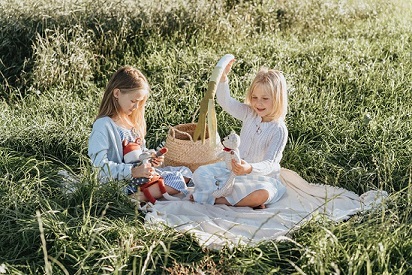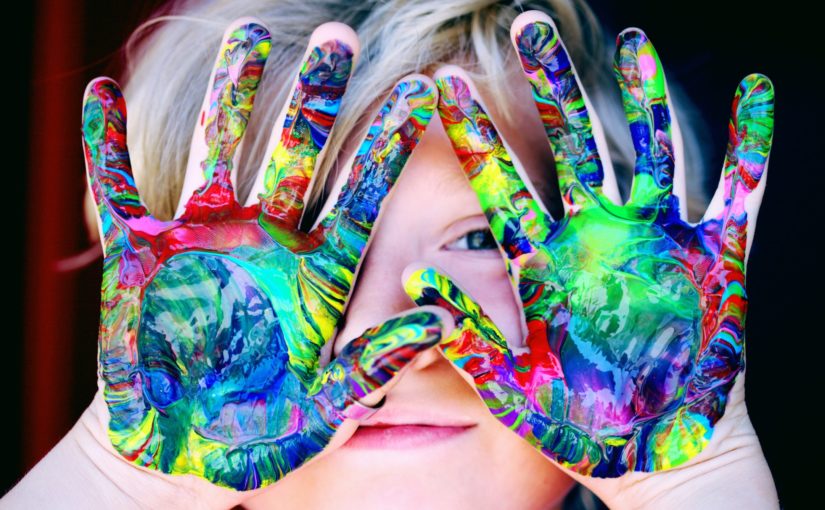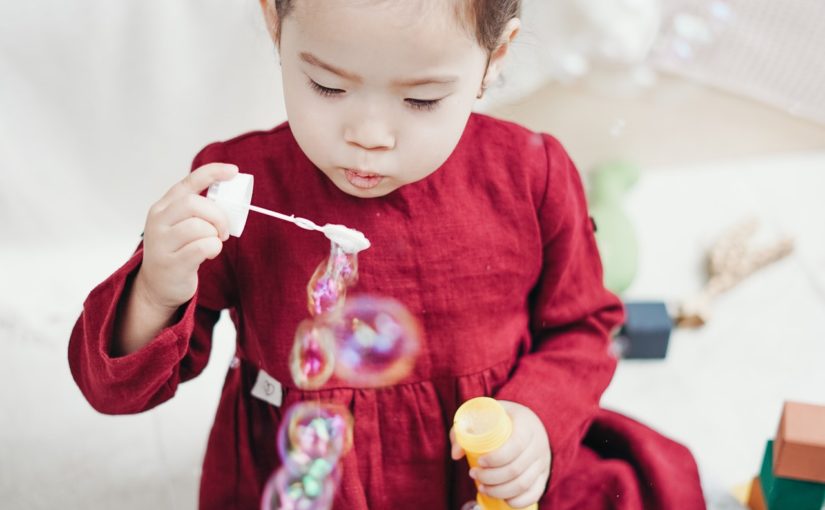Many children go through a phase that they begin to feed their dolls, stuffed animals, or their family members. This a BIG milestone for play development. It can also be a great way to learn language! Join in with them to help create a picnic inside…or out! Those of us living in cold weather the next few months, we can turn any space inside into a picnic. Your children can bring along their favorite dolls or stuffed animals. Help them pack a “picnic basket” by asking them to find certain foods/drinks you would like(or pretend one the dolls wants). Also, when the kiddos choose what they want, help them name the food or drink before putting it in the basket. While setting everything up, talk about everything else you need for the picnic and describe what you are doing. Ask your children to help! Everyone will need a plate, cup, fork, spoon, etc. Model the language you would like them to use. For example, “May I have some grapes?”, “Thank you!”. You can use their pretend food or what you have in your kitchen. The kids will have fun hearing you pretend to talk in funny voices for their friends(dolls or stuffed animals). They may even begin doing it as well! Modeling words and phrases during pretend play helps them learn and build their language skills, social skills, and maybe even some motor skills too! If your child(ren) prefer a tea party, make it a tea party! For some of our “picky eaters”, this may help them to try new foods! Picnics, real or pretend, are a great way to help children learn new words and how to use them!
Sounds/words to include: names of foods and drinks, names of dolls or stuffed animals, blanket, basket, plates, cups, fork, spoon, napkin, pour, scoop, pass, more, please, all done, yum, yuck, yes, no, thank you, your welcome, etc.



